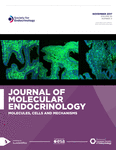CRISPR/Cas9: a breakthrough in generating mouse models for endocrinologists
- Institut de Génomique Fonctionnelle de Lyon, Université de Lyon, CNRS, INRA, École Normale Supérieure de Lyon, Lyon Cedex 07, France
- Correspondence should be addressed to F Flamant; Email: Frederic.Flamant{at}ens-lyon.fr
Abstract
CRISPR/Cas9 is a recent development in genome editing which is becoming an indispensable element of the genetic toolbox in mice. It provides outstanding possibilities for targeted modification of the genome, and is often extremely efficient. There are currently two main limitations to in ovo genome editing in mice: the first is mosaicism, which is frequent in founder mice. The second is the difficulty to evaluate the advent of off-target mutations, which often imposes to wait for germline transmission to ensure genetic segregation between wanted and unwanted genetic mutations. However rapid progresses are made, suggesting that these difficulties can be overcome in the near future.
- Received 3 June 2016
- Accepted 7 June 2016
- Made available online as an Accepted Preprint 1 August 2016
- © 2016 Society for Endocrinology











